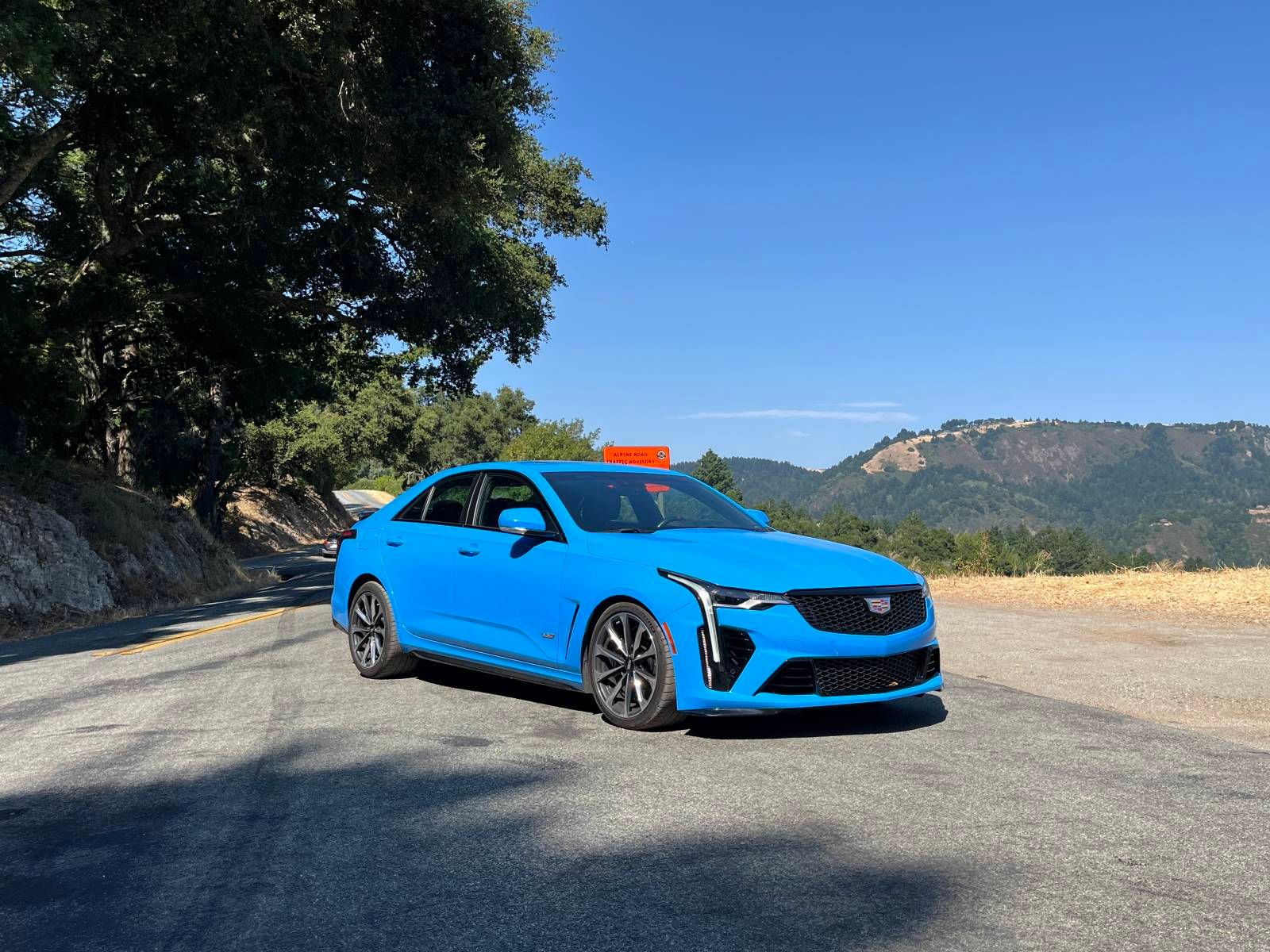2022 Cadillac CT4-V Blackwing Test Drive Review
Published on .
#Cadillac #California #cars #review #test drive
There are cars you put your foot in, drive to an intersection and immediately feel “at home”.
This caddy is like that — all controls are weighted and precise, all reactions are instant and sharp, the car always thing feels rigid, powerful and athletic with consistent and predictable reactions.

Brake pedal — wow, there is no dead travel, and pedal travel is quite short. Brake stiffness can be adjusted from a race-car firm to “normal” via driving modes. The softest setting works best at city speeds and is firmer than an average “normal” car.
I don’t have much to say about the steering feel — either I’m deaf and numb, or it feels ordinary. Steering adjustments through drive modes do make a difference, but they seem to change the weight on the wheel rather than the “feel”.
The steering wheel as an instrument is perfect — relatively small, thick enough, and easy to grip. How did they nail all those different and subjective things?!

The manual gearbox and shifter are a revelation. Like with brakes, you get a tuned-up, top-shelf aftermarket unit. Not literally, of course, but I have never experienced a shifter like this on a stock vehicle. Heck, it’s the best shifter I’ve ever come across!
The clutch pedal weight is nice, but I never fully adjusted to the engagement point. Likely need a little more time with the car. Rev-matching is easy, and shifter travel is very short and direct. Automatic rev-matching and no-lift shifts are included.

The V6 engine pulls, but being a turbo, there is no point in revving it out to the 6500 rpm limit. I never felt like the car lacked power; I will need to take CT4-V BW to the racetrack to discover power delivery limits without taking a risk of giving away my driver’s license. There is no turbo lag to report.
It’s plenty fast off the start, putting 280 highway traffic to shame without sweat or noticeable effort. I think that is considered a luxury among Rolls-Royce owners. I averaged 18 mpg in a mix of highway and canyon driving.

At this point, I feel biased, but the magnetic-ride suspension is magical. It has three settings, all of which make sense and make a noticeable difference.
For broken city roads, choose the softest option; for spirited highway cruising and high-speed canyons, go with the middle one; and for tight canyons with broken pavement, choose the stiffest setting.
In any suspension mode, the car doesn’t feel upset, jittery, or excessively harsh, but trust me — you don’t want to ride on city roads with the stiffest setting.
The spring rate is on the softer side, just like it should be to make this car livable on rough pavement. Magnetically adjustable dampers do the rest and limit all unnecessary movement.
The way suspension works is a huge part of this car’s character and charm. GM team that worked on it deserves a bonus and promotion.
Besides steering, engine, brakes and fake engine noise intensity, you can tweak the level of stability control intrusion. This is a great tool for honing car control skills on the track.
I love the dashboard — it sits lower and is not as deep as I expected looking at the car from outside. Its elegant, convex shape reinforces the perception of driving a small, sporty vehicle. It looks like a blend of G80 BMW 3 Series and MX5 ND dashes.
Materials are nice to touch, and there are no rattles.
Front seats are good. Initially, I felt like my body is getting pushed out of the seat. There is no sensation of latching in or being hugged. At the same time, they are supportive when driving hard and keep you in place. On a second day of driving I kind of forgot about their existence.

The instrument cluster is fully digital, with at least three display modes. Sport mode was my favorite, with selected gear displayed in the center and a classic-shaped round tacho around it.
Digits are big enough, contrast is fine, and you can choose up to four sensors to render measurements to the left of the tachometer.
I would prefer a mechanical tach and speedo, with a screen in between, but that’s too much to ask for in 2024. At least most of the buttons in this car are mechanical.

Interior and cluster styles are close to German cars in their spirit, but do preserve and display their American DNA. In other words you won’t confuse this interior with any german brand.
It’s very subjective and I’ll let pictures do the talking, but personally I love how this car looks. Driving modern american car in California feels fresh and somewhat provocative. CT4V BW stands out across an army of german competitors and ubiquitous yet indistinguishable Tesla cars.
Some cars are perceived as well-built, long-lasting, and dependable. Body stiffness, interior materials, and small mind tricks like the sound of a closing door play a role in making such an impression. This car certainly is in this camp.
The curb weight is about 3860 lbs (1750kg), but CT4-V doesn’t feel heavy or big. If I had to guess, I would say it’s 500 pounds lighter than it is. And the car size feels just right.

Returning CT4-V BW back to the owner was a sad moment. I want to own an American car now — it’s a perfect daily for a car enthusiast.
Further Reading
I loved this CT4-V BW POV video and share the sentiment.